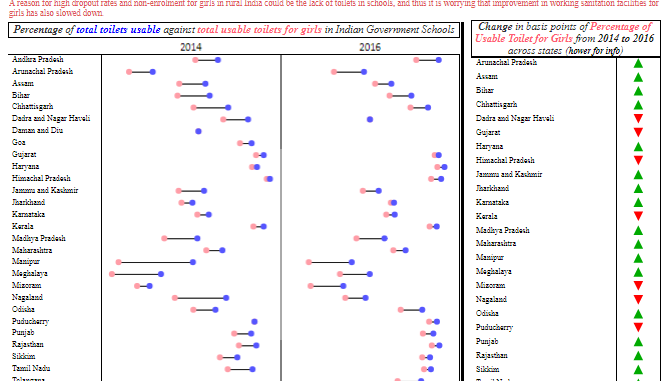
The BJP Government came into power in 2014 with a thumping majority and since then one of its flagship campaign was the Swachh Bharat Mission. Swachh Bharat Abhiyan (English: Clean India Mission) is a campaign by the Government of India to clean the streets, roads and infrastructure of the country’s 4,041 statutory cities and towns.The campaign was officially launched on 2 October 2014 at Rajghat, New Delhi, by Prime Minister Narendra Modi. It is India’s largest ever cleanliness drive with 3 million government employees, and especially school and college students from all parts of India, participating in the campaign.
The objectives of Swachh Bharat are to reduce or eliminate open defecation through the construction of individual, cluster and community toilets. The government is aiming to achieve an Open-Defecation Free (ODF) India by 2 October 2019, the 150th anniversary of the birth of Mahatma Gandhi, by constructing 12 million toilets in rural India, at a projected cost of ₹1.96 lakh crore (US$30 billion).
In 2016, the ASER survey was conducted in 589 out of 619 rural Indian districts, and surveyors visited 17,473 schools. as many as 96.5% of rural elementary government schools in India had toilets, but more than one in four toilets (27.79%) were dysfunctional or locked, according to data collected .
Although most of the states have shown progress in number of schools with Usable and functional toilets , some especially in the North East are not upto the mark. For example in Mizoram , of all the schools sureveyed in 2016 only 40% had availabilty of Usable toilets . This was just 7 basis point increase from the year 2014. Similar was the case with other northeastern states Manipur , Arunachal Pradesh , Nagaland and Meghalaya where the percentage of schools with availabilty of usable toilets were 43.8% , 49.3% , 50% and 51.9% respectively.
Also its worth nothing , Uttar Pradesh which is the most populous state in the country accounting for around 16% of India’s population had only 54.8% schools with functional and usable toilets.
The situation is bad when we look at schools with usable toilets for Girls . One of the reasons for high dropout rates and non-enrolment for girls in rural India could be the lack of toilets in schools, and thus it is worrying that improvement in working sanitation facilities for girls has also slowed down. Data show that a lower proportion of schools have working toilets for girls than they have for boys, which means that girls do not enjoy the same level of access to working sanitation facilities as boys do. For example in Maharashtra, 68% of schools had a working toilet compared to 62.5% of working toilets for girls. Similarly, in West Bengal, the difference between the recorded percentage of schools with toilets and the recorded percentage of schools with toilets for girls was 14.7% in 2016.
The viz takes a dig into how the states comapare in terms of proportion of schools with usable toilets against that for girls between 2014 and 2106 .
References : Business Standard
